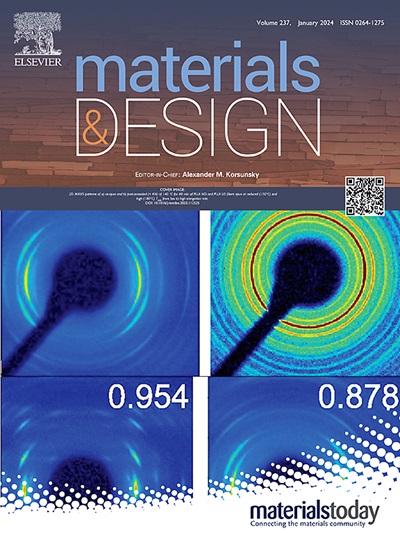Addressing temperature challenges in machining: Deep-eutectic metalworking fluids and their influence on surface integrity
IF 7.6
2区 材料科学
Q1 MATERIALS SCIENCE, MULTIDISCIPLINARY
引用次数: 0
Abstract
In manufacturing, cutting tools and component integrity are subjected to high-performance thresholds. The role of cutting fluids is pivotal in mitigating heat generation and friction at the tool-workpiece interface. This study explores the application of specifically designed, unconventional, and eco-friendly media, Deep-Eutectic Fluids (DEFs), which provide optimized fluid delivery to the cutting zone, regulating lubrication and cooling, while maintaining the surface integrity of the machined parts. To benchmark DEFs against traditional material removal methods, including dry, and wet (emulsion-based, Hocut 3380) processes, grinding was selected due to its thermal and lubrication demands. The results indicate that DEFs reduce the formation of severely deformed layers by 47% in comparison to conventional water-based coolants exhibiting superior lubricity, yielding more consistent deformation profiles and lower surface roughness. The generated residual stresses are closely comparable to those achieved using water-based metalworking fluids. This was substantiated by micromechanical testing, revealing a coherent failure mechanism at the machined edges for both DEF and wet-cutting media, significantly mitigating the adverse effects of dry machining. These findings highlight DEFs’ potential for industrial-scale adoption as a sustainable alternative in material removal processes, underscoring their capability to enhance process efficiency and environmental sustainability, or as an in-field portable cutting fluid.

求助全文
约1分钟内获得全文
求助全文
来源期刊

Materials & Design
Engineering-Mechanical Engineering
CiteScore
14.30
自引率
7.10%
发文量
1028
审稿时长
85 days
期刊介绍:
Materials and Design is a multi-disciplinary journal that publishes original research reports, review articles, and express communications. The journal focuses on studying the structure and properties of inorganic and organic materials, advancements in synthesis, processing, characterization, and testing, the design of materials and engineering systems, and their applications in technology. It aims to bring together various aspects of materials science, engineering, physics, and chemistry.
The journal explores themes ranging from materials to design and aims to reveal the connections between natural and artificial materials, as well as experiment and modeling. Manuscripts submitted to Materials and Design should contain elements of discovery and surprise, as they often contribute new insights into the architecture and function of matter.
 求助内容:
求助内容: 应助结果提醒方式:
应助结果提醒方式:


